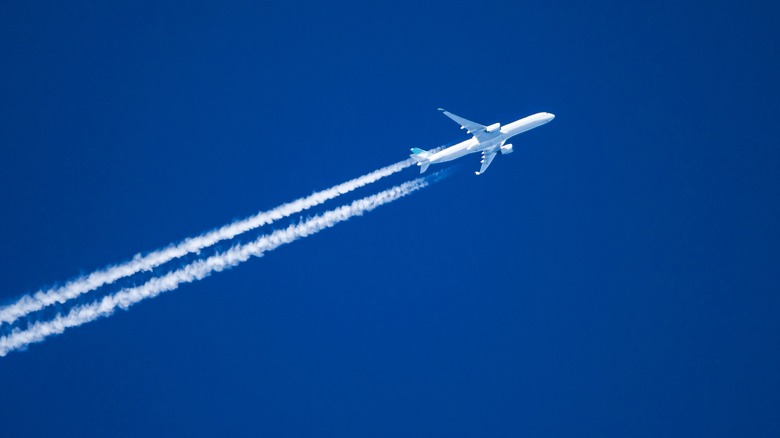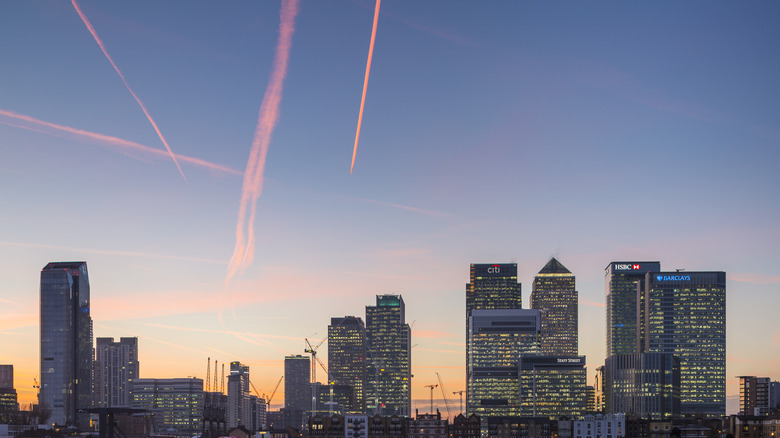
Look up on a clear day and you might spot long, white lines across the sky, trailing behind airplanes like ribbons. These are known as contrails, short for "condensation trails," which already hint at how they are made.
Contrails form when hot, humid exhaust from an aircraft's engines mixes with the much colder air at high altitudes. Jet engines emit water vapor and soot as a byproduct of burning fuel. When the water vapor from the engine hits this frigid environment, it condenses almost instantly
around the soot into ice crystals, forming the bright white streaks we see from the ground. It's the same basic principle behind your breath becoming visible on a cold morning.
But not every plane leaves a contrail. Conditions need to be right. The temperature and humidity levels at high altitudes vary constantly. If the air is too dry or not cold enough, the water vapor dissipates invisibly. But depending on the flight route and the atmosphere's moisture, contrails can linger for hours and even spread out into thin cloud formations. Actually, frequent contrails can have climate consequences. They trap outgoing radiation generated by or bouncing off of the Earth, warming the surface while having minimal cooling effects. Estimates vary, but according to a report from the European Union Aviation Safety Agency, contrails may cause up to twice the warming of aircraft CO₂ emissions alone. Some studies even suggest a single evening flight, like a pink-eye flight, can increase warming significantly. Careful routing to divert planes out of high-altitude places where contrails tend to form will not only cut down on high-altitude airplane flatulence — but it can reduce contrails' warming impact by almost 60%.
Read more: The Odd Reasons TSA May Have Pulled You Aside For Additional Screening
Debunking Myths About Contrails

Contrails' mysterious vibe has fueled the imaginations of many people. Unfounded claims suggest "chemtrails" (this is conspiracy theorists' nickname for contrails) are proof that governments or other entities are secretly spraying chemicals into the atmosphere for sinister purposes, such as controlling the weather, affecting human behavior, or conducting covert biological experiments. However, there is zero scientific evidence to support these ideas, and the truth is much simpler: They're just the result of physics and environmental conditions.
There's even an artistic side to contrails. Their crisscrossing patterns often paint geometric shapes across the sky, and at times, they shimmer with subtle color hues. Contrails in the sky can look orange, red, yellow, or grey. This, of course, is not the actual color of the contrail. Rather, the ice crystals are hit by the sunlight, which creates an optical effect. It's a similar process to how rainbows are created, by sunlight reflecting off water droplets — which is why Hawaii's rainy season is the perfect time to view rainbows.
So what if you don't want to be seen? A trail is the last thing you need. This is why contrails are a current concern for stealth planes, or military planes designed to be invisible to radars. For instance, during World War II, visible vapor trails gave away bomber formations, which allowed fighter intercepts. For this reason, more and more studies are being done to avoid making contrails, even if they're a stunning pretty view for most of us!
Ready to discover more hidden gems and expert travel tips? Subscribe to our free newsletter for access to the world's best-kept travel secrets.
Read the original article on Islands.











